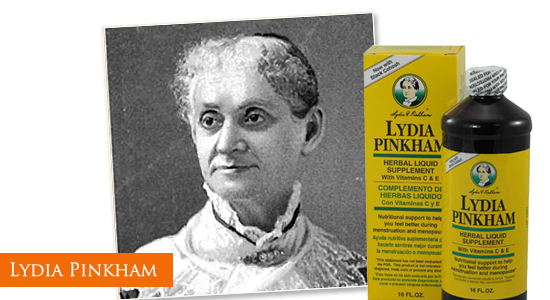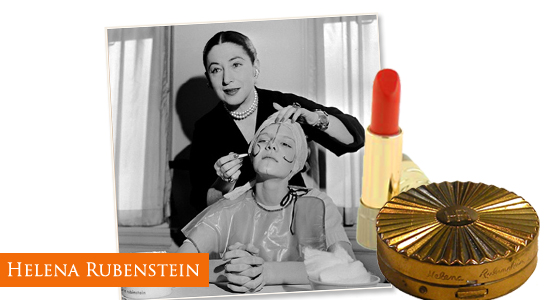{History} 3 FOFs who changed your life
 —————————————————————————————————
—————————————————————————————————
 Kate Kelly, a historian who blogs for the Huffington Post and for her personal website, America Comes Alive!, was working on a project, “30 Remarkable Women Under 30 in American History,” when she began to realize that many women had made astounding contributions to society in their 40s and 50s. “We started the concept as 30 under 30,” says Kate. “But, what we found is that some women launched bigger and better careers after that.” Kelly has since expanded her research to include women of all ages and has renamed the series “Inspirational Women.” Here, she shares the tales of 3 FOFs whose innovations and hard work have changed your life.
Kate Kelly, a historian who blogs for the Huffington Post and for her personal website, America Comes Alive!, was working on a project, “30 Remarkable Women Under 30 in American History,” when she began to realize that many women had made astounding contributions to society in their 40s and 50s. “We started the concept as 30 under 30,” says Kate. “But, what we found is that some women launched bigger and better careers after that.” Kelly has since expanded her research to include women of all ages and has renamed the series “Inspirational Women.” Here, she shares the tales of 3 FOFs whose innovations and hard work have changed your life.
Imagine not having any pain relievers for your pre-menstural cramps and menopause woes. Even worse, imagine not being able to tell anyone about those woes….
In 1873, the economy plummeted, taking down with it many hardworking business owners, including Isaac Pinkham. Isaac was no longer able to financially support his family, so his wife, Lydia, age 54, began to seek out ways to make a quick buck.
An herbal remedy for menstrual cramps, that she brewed in her cellar, was becoming a hot commodity with friends and neighbors. The “vegetable compound” contained “unicorn root, life root, black cohash, pleurisy root, and fenu-greek seed” and was 19-20% alcohol. Lydia’s son Daniel suggested she package and market the blend. Product sales were slim to none at first, but then, Daniel proposed Lydia become more visible, as the face of “Lydia Pinkham’s Vegetable Compound.” She had her photograph taken and an ad made up which they ran in multiple newspapers and magazine. Sales shot up and health questions from women began pouring in. Soon, the business was grossing about $300,000 per year.
Lydia died in 1883 but her family members kept the business going and her supplement, Mrs. Pinkham’s Herbal Product, although reformulated, is still sold today.
Historian Kate Kelly says: “In a time when women could not discuss female problems with a doctor, Lydia Pinkham drew attention to these issues being neglected by mainstream medicine.”
—————————————————————————————————
She helped us put our best our best FOFaces forward.
Helena Rubenstein, a Polish-born beauty with extraordinary skin and style, moved to Australia at the age of 32. Aussie women would frequently approach her to ask how she maintained such supple skin despite the harsh Australian sun and whipping winds. Her secret, as it turned out, was a cream developed by a Hungarian chemist with lanolin from the wool of sheep.
Helena figured out how to replicate the cream, named it “Crème Valaze” and found an investor who fronted her $1,500 to open her first salon in Melbourne. There she “diagnosed” her customers’ skin needs and “prescribed” them a treatment–an enormously successful marketing tactic. Within two years she was able to pay back her loan and expand to other cities.
Instead of borrowing money (women couldn’t get bank loans), she raised $100,000 and opened shop in London. From there, she expanded to Paris, and then at age 45, she opened her first store in New York City. She employed her seven sisters to help her as she expanded her beauty empire to even more U.S. and European cities, and added makeup to her line. In 1928, at the age of 58, Helena sold the American business to Lehman Brothers for $7.3 million. Still, she continued to work on her European companies and major charity initiatives well into her FOF years. Despite being a multi-millionaire, Helena was known to be fabulously FOFrugal–she packed a brown bag lunch her entire life.
Kate Kelly says: “Before Helena began selling makeup, in the early 1900s, actors were the only people who wore it. To some extent, she acclimated the international public to the idea of using cosmetic enhancement.”
—————————————————————————————————
Life of the Tupperware Party
When Brownie Wise got divorced in 1939, at the age of 26, she began working odd jobs to support her toddler. One of these jobs was selling Stanley Home Products–cleaning supplies and kitchen necessities–through a new home-party marketing strategy. Brownie was a natural, and she particularly excelled at selling a product line by the name of Tupperware, showing women how to “burp” the lid to get an airtight seal.
The CEO of Tupperware, Earl Tupper, took notice of her astounding sales and recruited her as a V.P. of marketing. Brownie encouraged Earl to take Tupperware out of retail stores and sell exclusively through home parties. This decision proved wildly profitable for the company. In 1951, Brownie, age 38, had raised a sales force of 200 women selling Tupperware. Three years later, at the age of 41, Brownie had 9,000 women selling the line. As a result, she was the first woman featured on the cover of Business Week.
Throughout her 40s, Brownie remained the face of the brand. In 1957, there was a power struggle and the board of directors forced her out, but she wouldn’t stop there. In her 50s, Brownie started several cosmetic companies employing the same home party sales method that was pivotal to her success.
Kate Kelly says: “While the peak of her career was in her 40s. Brownie continued employing the home sales method throughout her 50s. This sales tactic is still used by Tupperware and so many brands today such as Mary Kay cosmetics.”







